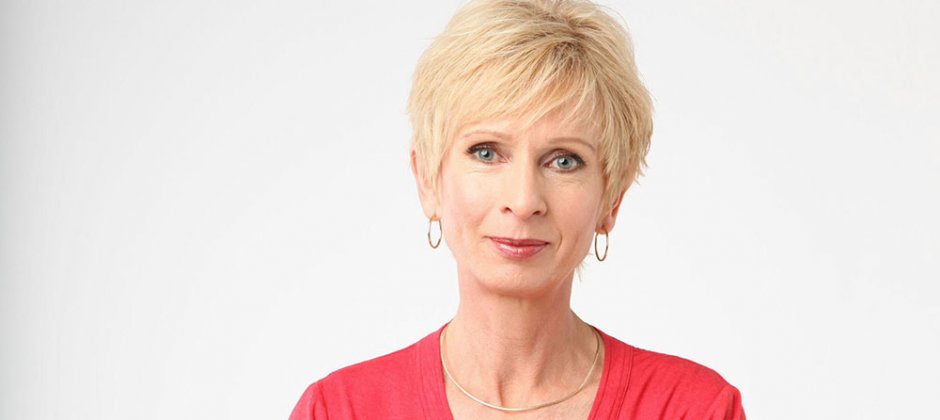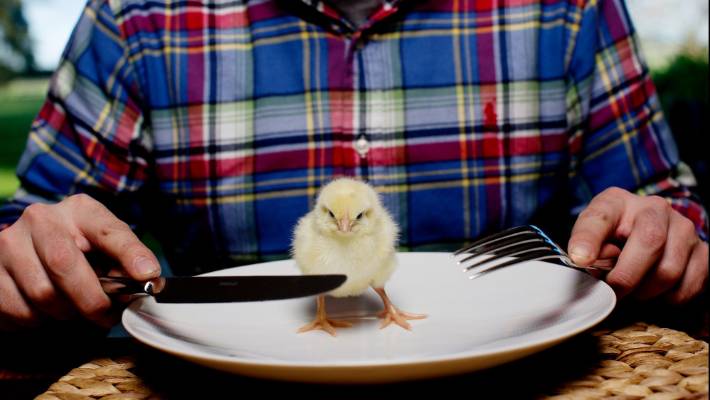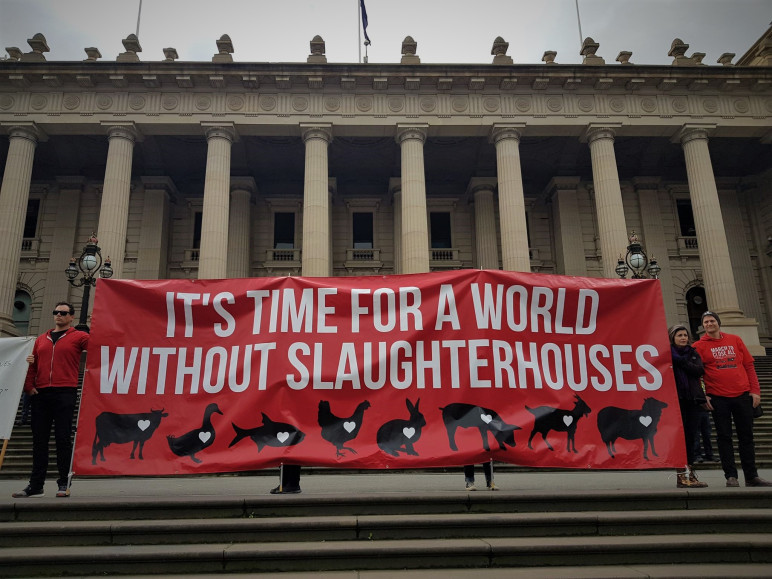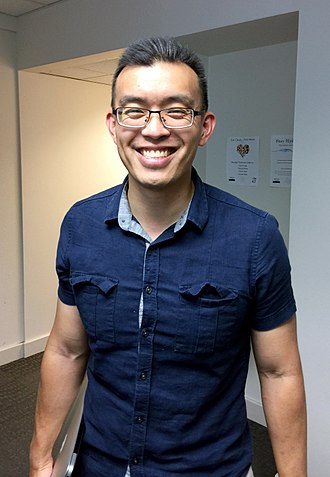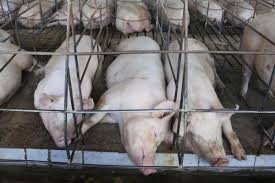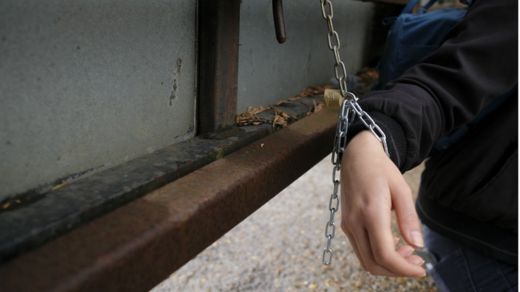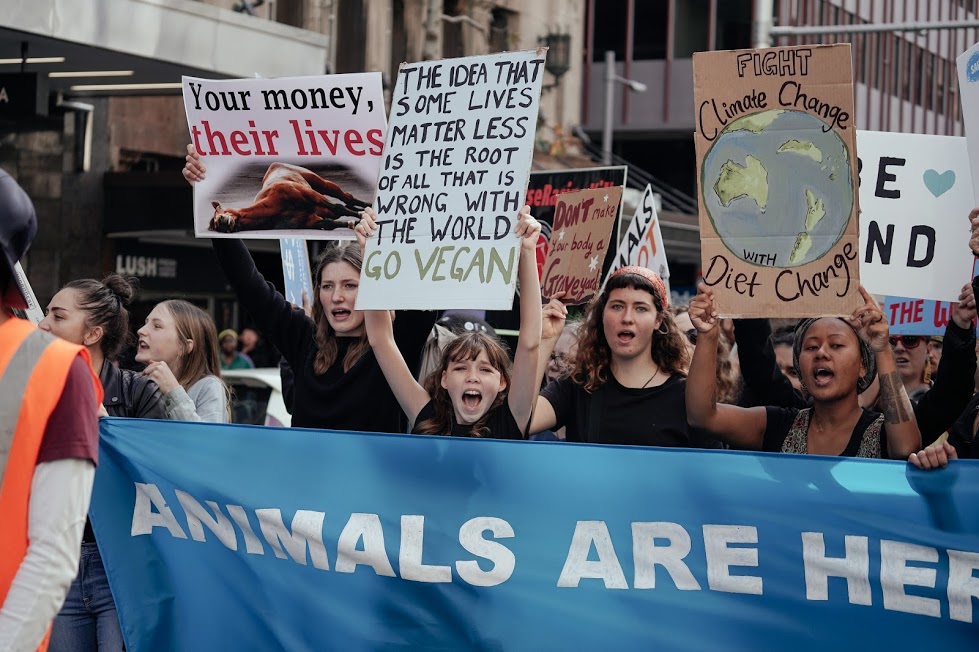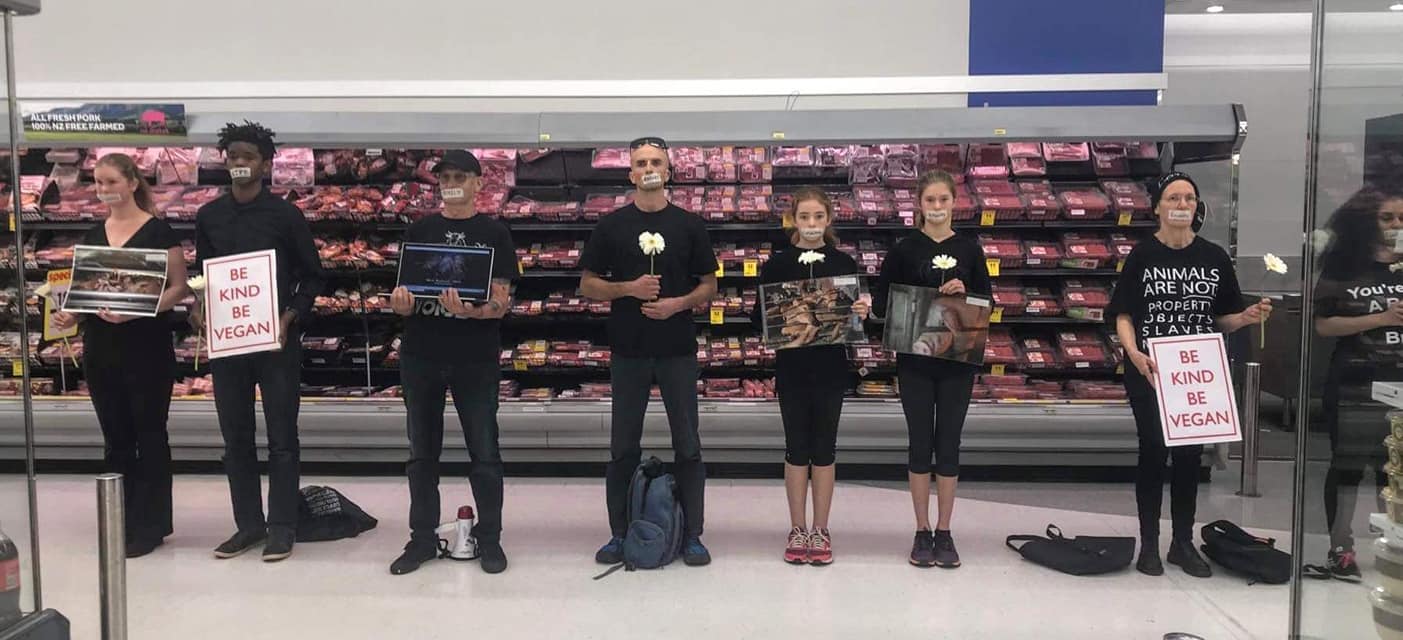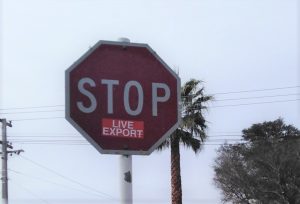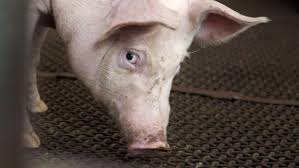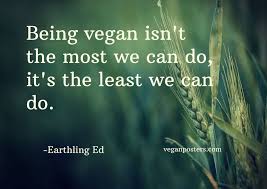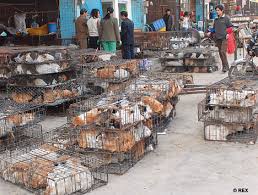Lyn White is known for many things, including her extraordinary personal courage, her commitment to animals, and her desire to make the world a better place for both animals and people. In this article, End Animal Slaughter’s Sandra Kyle pays tribute to her work.
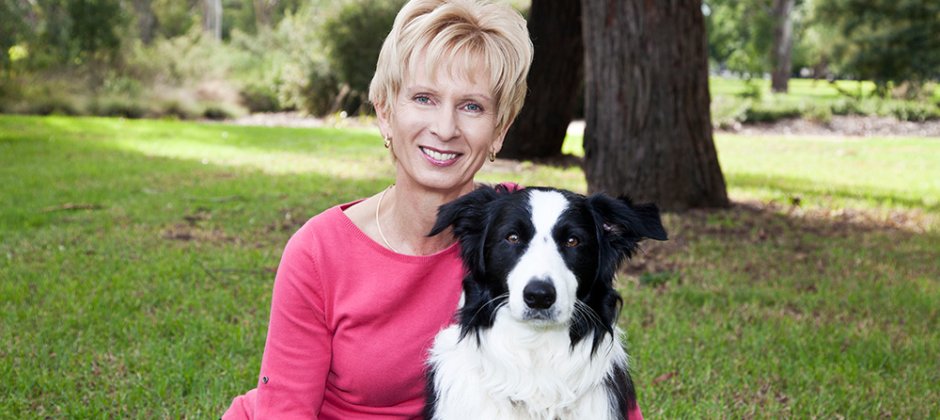
I have met Lyn White twice, at two separate Animal Rights Conferences. After her keynote address at the ‘Why Animals Matter’ Conference in Auckland in 2011 I worked up my courage and asked permission to hug her, because I admired her so much. Lyn politely obliged, but I could tell she was embarrassed. I learned two things that day. The first was that I shouldn’t go around asking strangers to hug me; the second is that Lyn White is essentially a shy introvert, forced into public life because of her passion to seek justice for abused animals.
Lyn grew up in Adelaide, South Australia, in the 1960s and 70s, the third in a family of four children. Her father was a manager at Shell and an avid bush walker and nature lover, her mother a musician. Both parents instilled a strong sense of right and wrong in their children and even as a child Lyn said that she “strongly wanted to take the side of right in my life.”
To her mother’s disappointment, Lyn didn’t show much interest in music. Instead, she enjoyed playing sport, and from an early age she felt an affinity with animals. As a student she got reasonable grades ‘without paying much attention’, but remembers being shy, and filled with self-doubt.
At the age of 17 Lyn embarked on a career as a police officer in the South Australia Police Force (SAPOL), jokingly suggesting that she was inspired by Farah Fawcett’s character in the Charlie’s Angels TV show. Putting on a uniform gave the young cadet confidence, and over the next twenty years as a police officer, her investigation skills and attention to detail were honed. She also learned another valuable lesson in the police force that was to stand her in good stead later, when she entered the hell holes known as slaughterhouses. This was to focus completely on the task at hand, and put her emotions to one side.
Lyn had the respect of her colleagues and she enjoyed her job, but by the late 90s she was wondering what else she could do with her life. She had come to the realisation that marriage and children were not for her, but felt she wanted a change. One day while casually looking through a magazine, she came across a photo of a caged bear in China. The cage was barely larger than his body, and the animal had a catheter crudely inserted into his gall bladder to extract bile for traditional Chinese medicine. This article would change her life forever.
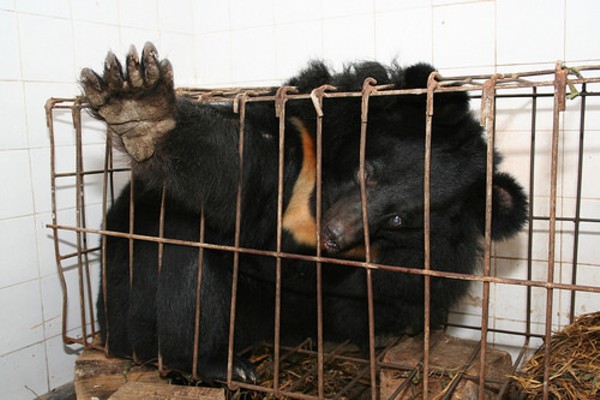
Reading about the cruelty of bear bile farming changed Lyn’s life forever
Shocked to learn of the plight of Moon Bears in the bear bile industry, Lyn realised that as animals can’t speak for themselves, they need us to be their voice. Her new direction began to crystallise in her mind. She contacted the author of the article, who worked for Animals Asia, and starting in 1998, Lyn spent her yearly vacation volunteering with them in Hong Kong. At the end of 2001 she resigned her job as Senior Constable with SAPOL to become the Australian Director of Animals Asia Foundation. Following a fund-raising walk from Sydney to Canberra, in which she exceeded her target of $20,000, Lyn attracted the attention of Animals Australia, a charity had been started originally by philosopher, Professor Peter Singer and animal rights activist, Christine Townend.
In 2003 she joined Animal Australia as Communications Director, and one of her first assignments was to investigate what happened to live sheep being sent to the Middle East.
Australia had been exporting live animals for decades, and there had been enquiries into complaints about the practice since 1985, but nothing much had changed. Each time an issue was identified the industry would say it was an isolated incident, or that improvements had already been made, and would continue to be made in the future.
The industry also came out with their own reports from time to time, whitewashing the situation, but there had never been an independent assessment of the treatment of animals in live export destinations. All that changed in November 2003, when Lyn flew to Kuwait where she and a colleague spent eight days investigating the unloading of sheep from the livestock vessel MV Al Kuwait and tracking their movements. They took footage of sheep who were dead on arrival, and one sheep who had become blind during the sea voyage from Freemantle. But it was the handling and slaughtering activities that followed that was the most disturbing.
Prior to this, Animals Australia had lobbied the government directly, but it had never worked. This time, instead of going to the politicians, the animal charity went to the media, and, prefaced with a ‘Disturbing content’ warning to viewers, the video footage was aired on 60-Minutes on 28 March 2004.
The response to the vision of extreme animal suffering was unprecedented in 60-Minutes history, and as a result Meat & Livestock Australia (MLA) announced that they were instituting an animal handling workshop for livestock operators and dockside workers in Kuwait.
In December 2005 and January 2006 Lyn and her British counterpart visited five Middle East countries, where she observed slaughter practices at the Shuwaikh abattoir in Kuwait, and the Bassateen abattoir in Cairo, Egypt. In Kuwait she documented mishandling involving sheep and cattle, many instances of butchers hacking at the animals’ throats, sheep being slaughtered privately in communal toilets of boarding houses, and sheep being trussed and transported in car boots, as many as three crammed in at a time. Her most telling words were for the Bassertine abattoir:
“Bassertine abattoir is a very disturbing place to enter. It is like walking into the underworld”.
Accompanied by an Egyptian translator who introduced them as leather merchants, the visitors documented butchers with huge knives and blood-drenched clothing walking around in a large open area, doing terrible things to the helpless animals who were crying out in agony and distress.
On 26 February 2006 60-Minutes aired another program, showing the appalling mistreatment of Australian cattle in the Bassateen abattoir, creating another furore, and leading to a ban on exports to Egypt (that was lifted two years later).
Howard Sacre, producer at 60-Minutes, is in awe of White’s accomplishments in these dangerous Middle East missions over many years:
‘It blows me away how gutsy she is because she’s taking huge risks. She gets into these places with a hidden camera with men with big knives and axes who don’t know her. I mean, she could disappear in an instant’.
In 2010, an “independent” study tour sponsored by MLA and its live export body LiveCorp, visited 11 Indonesian abattoirs as part of an assessment of the welfare of Australian live cattle exports. The team of assessors witnessed the slaughtering of 29 cattle in the 11 abattoirs and observed that “These abattoirs were typically free of offensive smell and animal noise suggesting a good standard of animal welfare”. The conclusion to the extensive report was that, “Overall the tour found that animal welfare in Indonesia was generally good.”
Scrutinising the findings, Lyn and Animals Australia CEO Glenys Oogjes saw that something didn’t add up. Comments were made to the effect that non-lethal stunning was frequent, and the Mark 1 cattle restraining boxes supplied by the MLA were not being used satisfactorily.
Lyn and a colleague decided to follow this up, and flew to Jakarta. Such was the sense that the slaughterhouse was a normal place of business, they were given permission to film. It was a harrowing experience, and the cumulative toll of her work was beginning to take a huge toll on Lyn. Glenys Oogjes, CEO of Animals Australia described how she had changed on her return:
“I had never seen her so thin and gaunt, and her eyes looked haunted. It affected her so very badly.”
After Lyn returned to Australia at the end of March 2011, ABC Four Corners was approached with the evidence Animals Australia had obtained. As well as the actual slaughter they documented cattle having their eyes gouged, tails broken, and tendons slashed, a cruel method employed in some slaughterhouses, that forces the animal to collapse.
The next day, the RSPCA, Animals Australia and GetUp! websites crashed under the load, and in just three days over 200,000 Australians had signed a petition to the Government to stop live exports. Not everyone hailed Lyn as a hero, however. Many callers to talkback stations criticised her for not intervening and stopping the abuse and slaughter. She was also called out by cattle producers in northern Australia, who supply most of the cattle for export to the Middle East. They accused her of ‘Unaustralian behaviour’ for exposing the issues. Western Australia Senator Chris Back even suggested that the team bribed the slaughtermen to enact the level of cruelty purely for sensationalist purposes.
In the following two weeks Lyn was in great demand from the media, and gave over 100 interviews, and as a result of the furore Federal Agriculture Minister Joe Ludwig suspended live exports to the 11 Indonesian abattoirs in question. The ban was lifted however, subject to conditions, just a few months later.
In 2018, more undercover footage, taken by a courageous crew member, was given to the media. It documented the heartbreaking suffering of sheep of sea. The videos showed how thousands of sheep were suffering from heat stress in the hot Middle Eastern climate. Sheep were ‘baking in their own skin’, gasping for oxygen, caked in feces that had melted with the heat. They documented decomposing bodies, injured and sick animals left to die lingering deaths, pregnant ewes giving birth, and watching their lambs die. This incident saw Lyn once again in the public eye, commenting on the tragedy:
“The scale of neglect and the acceptance of suffering on these shipments is staggering. Sheep producers were no doubt mortified to discover that animals born into their care have ended up literally being cooked alive on live export vessels.”
Because of her investigations into live export over the last sixteen years, Lyn has become a well-known name, both in Australia and internationally. As Director of Strategy at Animals Australia she has spearheaded many other campaigns, including the treatment of animals raised for foods in factory farms, dogs abused in the puppy trade, and the greyhound racing industry. In her role as Director of Animals International, the global arm of Animals Australia, she collaborates with international groups on universal animal cruelty issues, and her efforts have led to welfare advancements in a number of countries. This includes in Jordan, where HRH Princess Alia al Hussein was inspired by Lyn’s work to set up the Princess Alia Foundation. She has said:
“Lyn’s ethos embodies the line from The Impossible Dream, ‘to be willing to march into hell for a Heavenly cause.’ She has done this time and again, and thank God has been rewarded with truly beneficial and far-reaching results for animals and humanity. I am simply in awe of her.”

Lyn has been the recipient of many awards. She was a state finalist for the 2012 Australian of the Year, and was named 2nd in a list of 100 most influential people of 2011 by The Age Melbourne Magazine. She was made a Member of the Order of Australia (AM) in the 2014 Queen’s Birthday Honours for “significant service to the community as an animal rights and welfare advocate”. Author of Animal Liberation and distinguished philosopher, Professor Peter Singer has said this of her:
“In my 40 years working with various organisations to reduce the needless suffering of both humans and animals, I have never known someone as brave and resolute – or as effective as Lyn. Lyn’s work has already prevented a vast amount of cruelty, and I am sure that in the future it will prevent much more. Lyn seems to me to have exactly the qualities that Australians look for in their heroes: a quiet no nonsense get-the-job done approach, combined with compassion for the weak and an abhorrence of cruelty.”
These days Lyn is much in demand as an inspirational speaker, and can speak without notes or teleprompter from the depth of her own experience to touch people’s hearts. The Animals Australia website states:
She presents a compelling argument that the causes of human and animal suffering are the same — and that we cannot address one without addressing the essence of both. Moreover she deeply challenges the essence of our humanity by advocating that we are not simply here to be human beings, but to become humane beings — and to leave this world a kinder and more compassionate place for those who follow us.
I’d like to finish my tribute to the work of Lyn White with her own words, that reveal her deeply spiritual nature.
“I believe in a higher power, a force for good in this Universe and I believe that when you work with pure motives to create change, something kicks in to help you. There is a reason behind everything, and I’m working where I’m needed, and where I’m meant to be.”
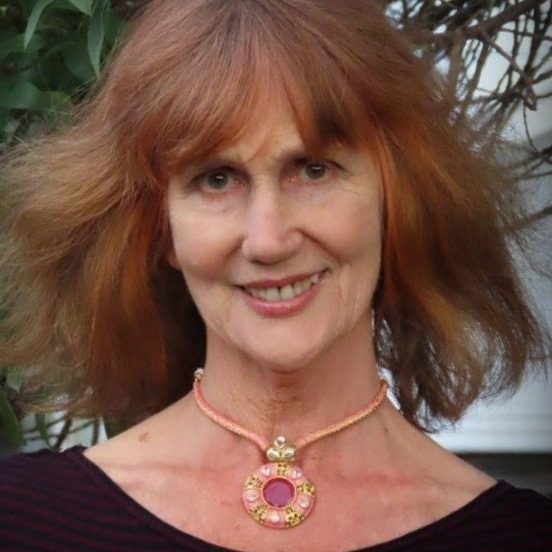
Sandra Kyle started End Animal Slaughter website in 2018, with the goal of closing all slaughterhouses in the western world by 2025.
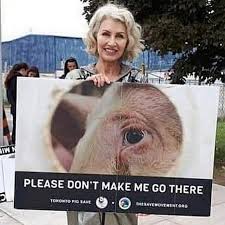
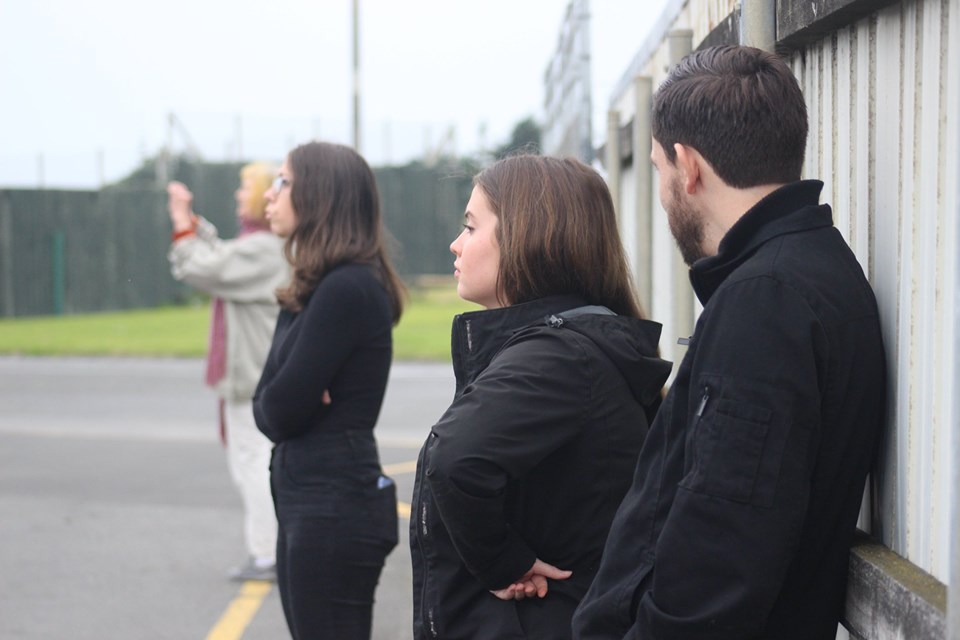
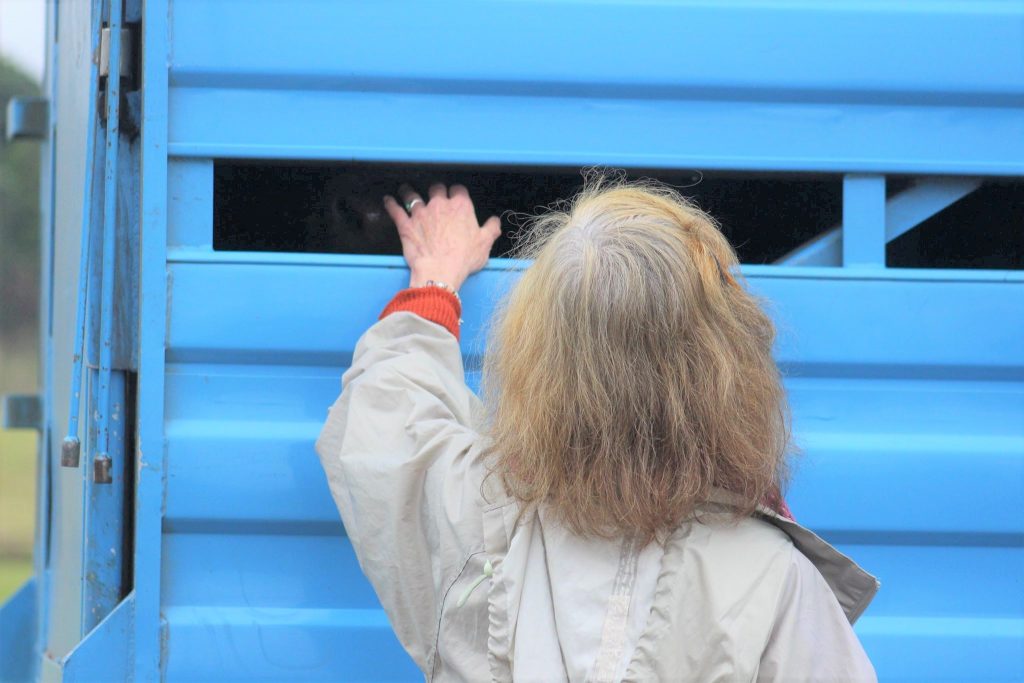
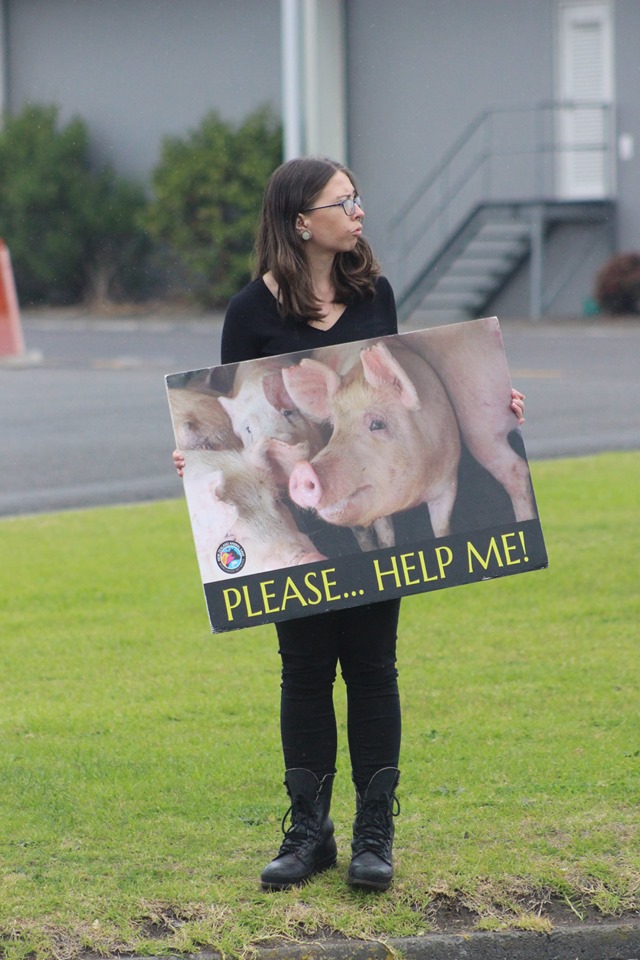
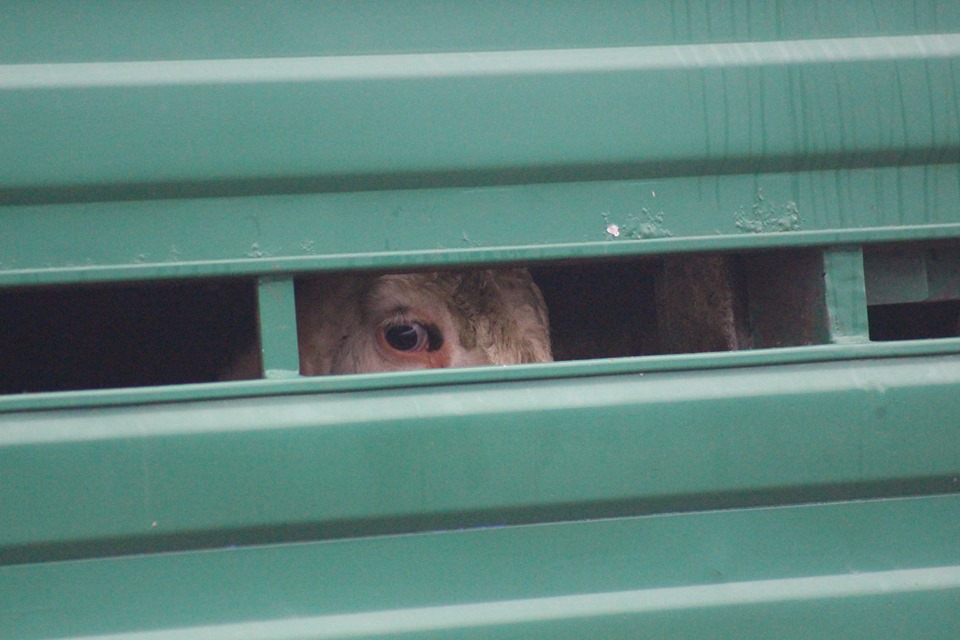
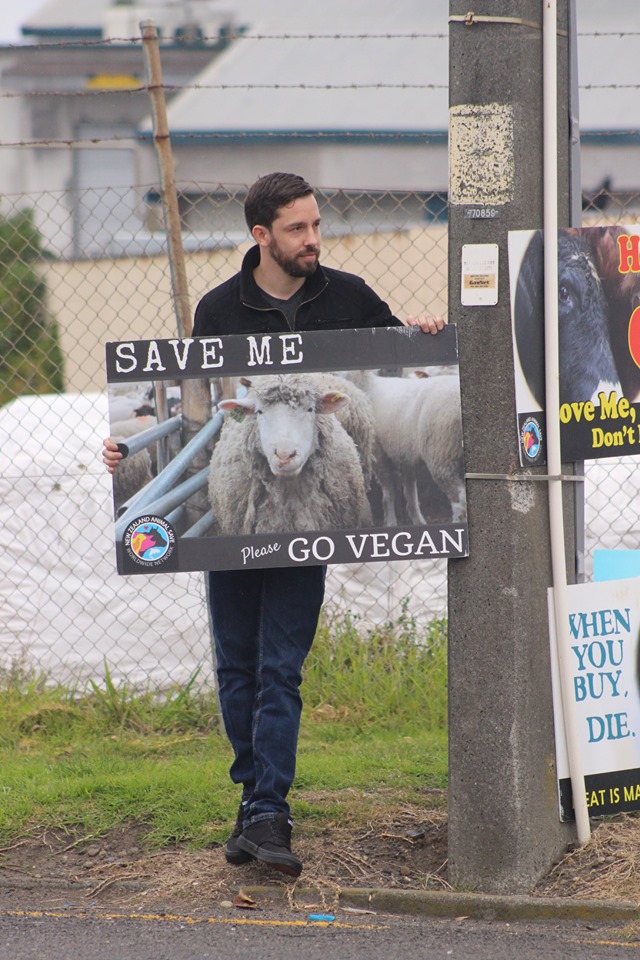
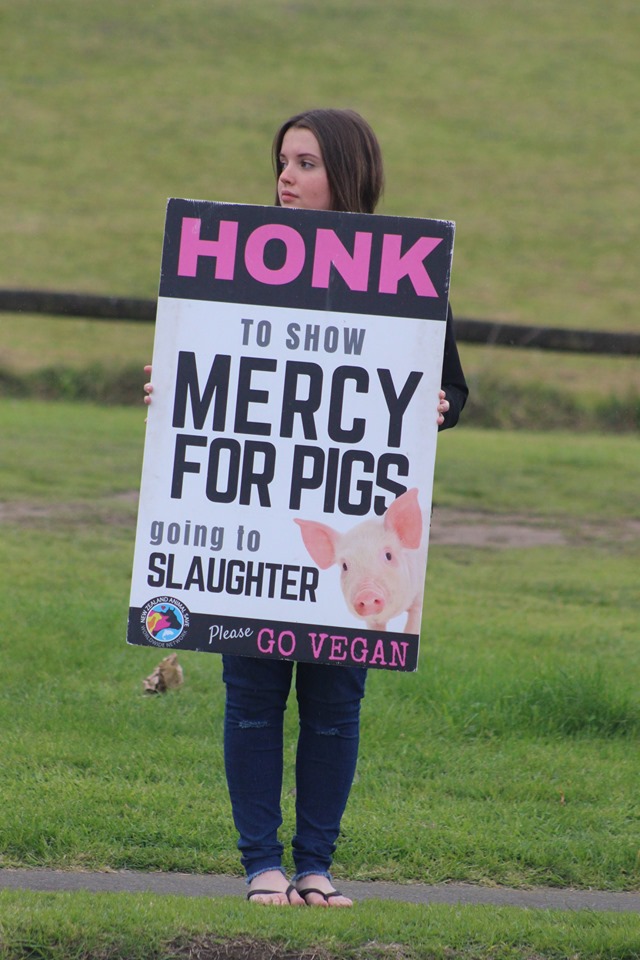
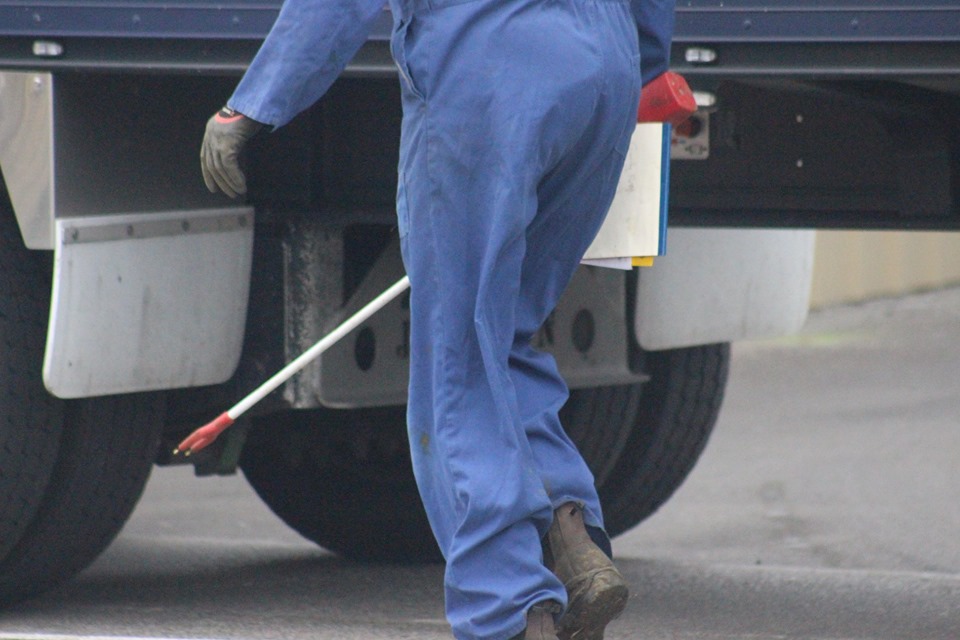
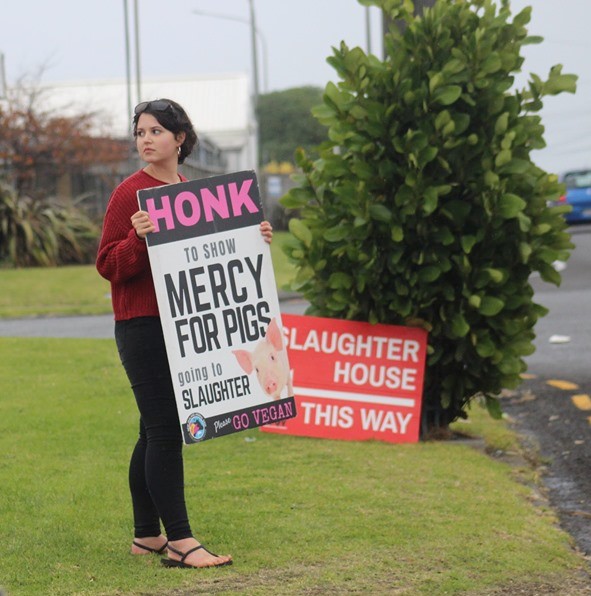
 Sandra started endanimalslaughter.org in 2018 with the aim of having all slaughterhouses in the western world closed by 2025.
Sandra started endanimalslaughter.org in 2018 with the aim of having all slaughterhouses in the western world closed by 2025.